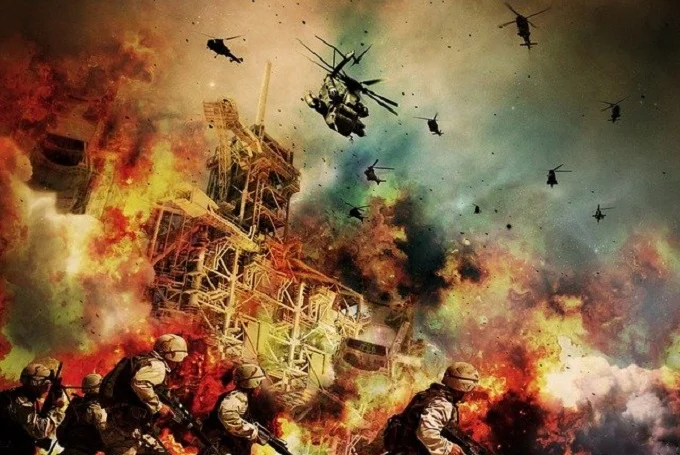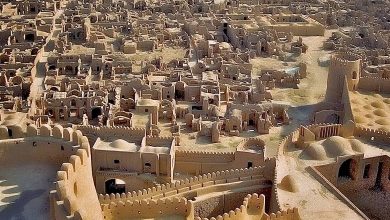Worst military decisions that led to a defeat

War is a complex business where it is very easy to make mistakes. In addition, in the ranks of an army, there are not very smart people who make short-sighted illogical decisions. We will talk about such worst military decisions that led to a defeat in this article.
6 worst military decisions that led to a defeat
1. Gideon Pillow built the trenches on the wrong side
Gideon Pillow has never been in the military. His paths were jurisprudence and politics, but not military affairs. However, this did not stop him from becoming a general in the US Army during the Mexican-American War in 1846. All because he was a friend of the 11th US President James Polk, who was then head of state. The president thought that nepotism was not bad and decided that his colleague in law practice was well suited for this case.
During the war, while in the Mexican village of Camargo, General Gideon Pillow received a report that the Mexicans would go on the offensive against his position. Then he ordered to dig trenches; however, he miscalculated and forced the soldiers to bite into the ground from the opposite side. The Mexican army easily bypassed the positions of the Americans, because of which the latter suffered heavy losses, finding themselves with the Mexican troops without any fortifications.
And this was not the first and not the last extravagant trick of Pillow. Later, when his colleague Winfield Scott captured two enemy howitzers, Pillow decided that he needed to give weight to the fairy tales he had previously composed about his exploits and stole these trophies, passing them off as his own. Of course, for such an offense, he was arrested.
2. George Custer decided to abandon the Gatling guns
Another failure on the American continent was performed by the world-famous cavalry officer George Custer. Even a person unfamiliar with history can remember from the movie Night at the Museum 2. This officer was famous for his reckless courage, complemented by rash actions and indifference to losses. But this is exactly what the US command needed to rein in the aggressive Indians who defended their lands from invaders.
In 1876, Custer campaigned against the Sioux. He had under his command about 600 people and had to oppose an army of Indians numbering 1500-2000 people. No need to think that the Indians meant savages with bows. They were experienced warriors with firearms, and the advantage was clearly on their side.
However, Custer could have a significant advantage in three Gatling guns firing several hundred rounds per minute. However, Custer abandoned them before the campaign because the machine guns were supposedly too bulky and would only slow him down, although he knew he would have to face superior forces.
As a result, at the Battle of the Little Bighorn on June 25, 1876, the US cavalry regiment was defeated by the Indians, losing five companies and their commander, George Custer.
3. Douglas Haig ordered to march in neat formation across the battlefield

Once upon a time, in the 18th century, the tactics of line infantry walking on foot across the battlefield towards the enemy had its advantages, especially in those days when artillery was not yet as accurate as it was already in the middle of the 19th century. For this and many other reasons, linear tactics were abandoned.
But lovers of time-tested tactics remained in the ranks of many armies even at the beginning of the 20th century. For example, Field Marshal of the British Army Douglas Haig, known for the huge losses of his personnel on the fields of the First World War, used this tactic in 1916 at the Battle of the Somme.
At that time, the war had long since turned into a positional war, and experienced personnel was sorely lacking on all sides. When the massive British offensive began, Douglas Haig ordered the soldiers, many of whom were on the front lines for the first time, to march at a steady pace in the spirit of 18th century linear tactics through the so-called “No Man’s Land.” It was an area between the troops of the Entente and the Triple Alliance, more like the lunar surface due to the huge number of exploding artillery shells without any cover. As a result, on that day, the British army lost 60 thousand people, who were shot at by German machine guns and artillery like in a shooting range.
4. Mark Crassus gave the order to attack the unprotected archers
The Battle of Carrhae was one of Rome’s greatest defeats. Then Mark Crassus waged war with the Parthian Empire, having an army of 43 thousand people, which was a serious military force. The vast majority of this army were foot soldiers, who carried equipment and heavy shields and provisions. The Parthians had only 10 thousand soldiers, but they were horse archers significantly changed the situation.
Crassus ordered an attack and stubbornly led the army against the Parthian troops. Those, in turn, retreated across their territory, constantly firing at the Romans with bows. The Romans attempted to defeat the archers, using a detachment of heavy infantry and light cavalry. Still, the Parthians fought back and destroyed the advanced Roman detachment.
Then, believing that the Parthians were running out of arrows after a long pursuit, Crassus ordered the army to make a new attack, which led to the complete defeat of the Roman army. Of the 43,000 Romans, 20,000 died, 12 fled the battlefield, and another 12 were captured. Mark Crassus himself was captured and executed.
5. Cao Cao connected the ships and helped the enemies win

Cao Cao was a Chinese general and chief minister of the Han dynasty in the early 3rd century. In 208 AD, he went to war against Shu Han and Eastern Wu with an army estimated at 220,000 soldiers to suppress the rebellion of the warlords’ Zhou Yu and Han Dang. Initially, the offensive was successful, but later, difficulties began when the rebels retreated to the ships.
Then Cao Cao had to quickly move from land to sea warfare, loading onto ships. Cao Cao’s opponents noticed that the commander placed his ships close to each other to reduce pitching. Then they sent a traitor to Cao Cao, who suggested that the commander join the ships together to avoid seasickness. Cao Cao, not seeing the trick, ordered his troops to tie the ships together, and soon after, they were hit by burning ships sent by the enemy fleet. A huge fire started, which destroyed the ships and part of Cao Cao’s army, which led to the defeat of the Han Empire.
6. Antonio Lopez de Santa Anna allowed the soldiers to sleep
In 1836, Texas declared its independence from Mexico, which did not please the latter, and a war began to return the territory. The illustrious general Santa Anna, who had previously won many battles, was sent to suppress.
Under the command of Santa Anna, the famous battle of Fort Alamo was won, and he thought that victory was not far off. On April 19, believing that the Texan troops were no longer a threat, Santa Anna decided to rest his army, settling on one side of the river and not even erecting fortifications. However, the Texian troops were on the other. On April 21, Santa Anna, like his entire army, dozed off for an afternoon siesta after the general ordered a well-deserved rest, as his troops were exhausted from the pursuit of the Texans. And by “drowsing”, we mean deep sleep, adopted in Spain and its former colonies. Moreover, Santa Anna was so arrogant that he did not even post sentries around the camp and did not send out any sentinels or scouts.
Texas General Sam Houston took advantage of this and, without attracting attention, entered the camp with his army at 15:30 and attacked the Mexican troops. In that massacre, which lasted 18 minutes, more than 600 Mexicans died. Among the losses of the Texians, only 6 were killed, and 26 were wounded. At the same time, Santa Anna was also captured at the Battle of San Jacinto, which led to the independence of Texas.
To get the latest stories, install our app here




